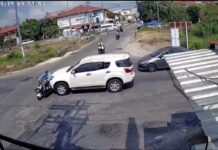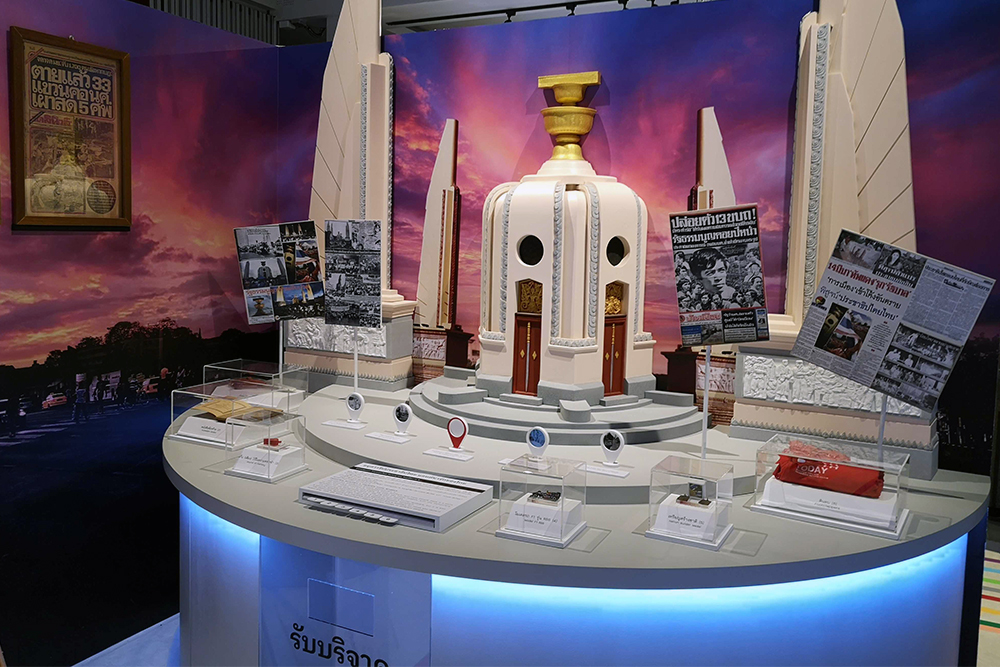BANGKOK — Perhaps no road in Bangkok is as contested in politics and in history as Ratchadamnoen Avenue, which runs for 1.2 kilometers in what used to be Bangkok’s city center in its older years.
The avenue – the scene of nearly every major protest in Thai history – has been a battlefield of opinions for 121 years since it was paved, and the battle continues to this day. The struggles can be explored at the latest exhibition, Traces of Ratchadamnoen, at Museum Siam.
“We discuss contested space,” exhibition curator Taweesak Worarittruengurai said. “This is where modernity and tradition clashes – in politics, architecture, and people’s lifestyle.”
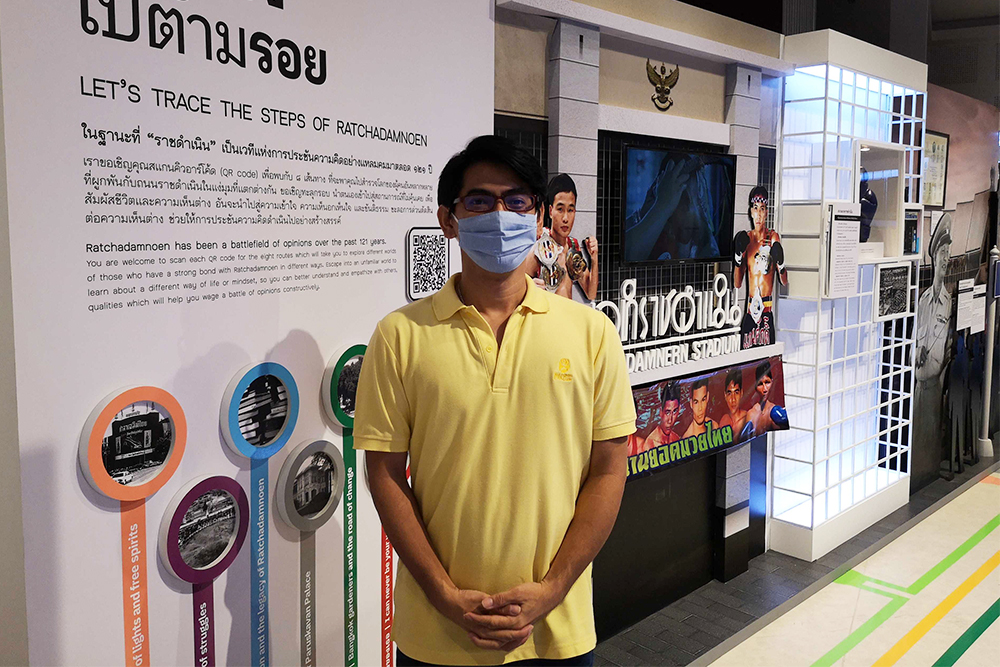
The wide avenue planted with mahogany trees was built on orders from King Rama V, or King Chulalonkorn, with the Italian-designed neo-renaissance Ananta Samakhom Throne Hall at the northern end.
The Throne Hall was completed in 1915 during the reign of Chulalongkorn’s son, King Rama VI, or Vajiravudh. But less than two decades after, a revolt which ended absolute monarchy took place on the avenue in 1932.
Soon a new political and architectural meaning was constructed, quite literally, on the avenue. Art deco architecture, the style adopted by the revolutionaries as a sign of progress, fills the royal boulevard. The Democracy Monument was unveiled in the middle of the avenue in 1940 to represent a modern and democratic Thailand. It was meant to be Thailand’s Champs-Elysees.
“There was political change and this space was chosen as the battleground of ideas, be it the Democracy Monument, the art deco buildings that are without classical ornamentations,” Taweesak said.
The avenue also witnessed hundreds of protests and demonstrations from all kinds of ideologies, from anti-military student movements in 1973 to an ultra-conservative group in 2005 who urged the ruling monarch to install a new Prime Minister.
Photos of soldiers, toting rifles, marching on pro-democracy demonstrators on Ratchadamnoen Avenue during an uprising against the military government in 1992 also became an iconic commentary on the state of Thai politics.
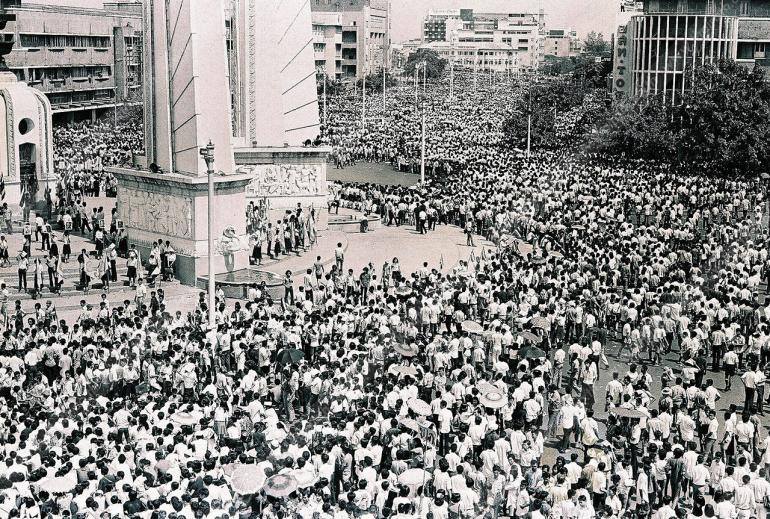
Half way through the exhibit, there’s a video of architecture historian Chatri Prakitnonthakan telling to the audience the avenue’s buildings, mostly owned by the Crown Property Bureau, are under “alteration.”
“They want the road to be used for royal and state activities while reducing the space as a place for political gatherings,” Chatri tells exhibition visitors in the video.
Per the initiative by the Crown Property Bureau, works are underway to alter the facades of all art deco buildings it owns into a neo-Baroque style.
The storied avenue is not just about contested politics, however, as pointed out by the exhibition.
Visitors learn about how a boxing stadium on the avenue, called Rajadamnern Muaythai Stadium, opened in 1945 and led modern Thai boxing to the world’s stage.
Fights there became standard modern Thai boxing. The number of rounds fought, the rules, and the size of the ring were decided and modernized here. The stadium is still in operation to this, though it adheres to the “double pricing” like many other attractions.
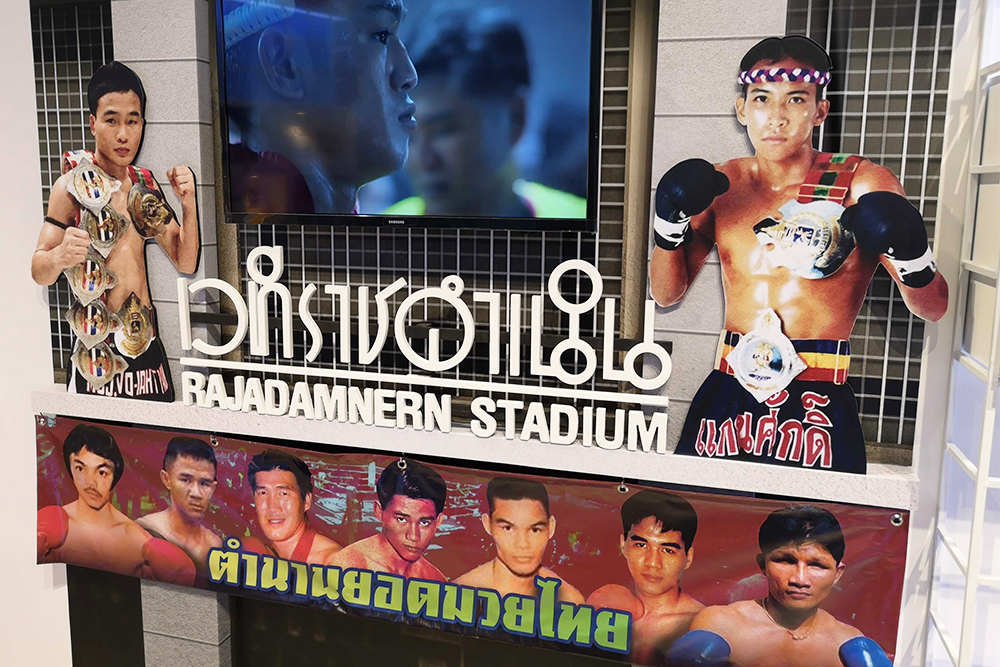
Twelve senior people were also chosen as co-curators who present their memories about the avenue.
And while all texts are both available both in Thai and English, Thai visitors can further explore the avenue from eight perspectives through audio guides, where one can access through scanning QR codes.
The exhibition is two years in the making, and cannot be missed by those interested in not just the avenue itself, but modern political Thai history as a whole.
“Traces of Ratchadamnoen” opens from today until August 30 from 10am to 6pm except Mondays. Museum Siam is located at 4 Sanam Chai Road, Bangkok. It is near MRT Sanam Chai Station, Exit 1. Call 02-225-2777



